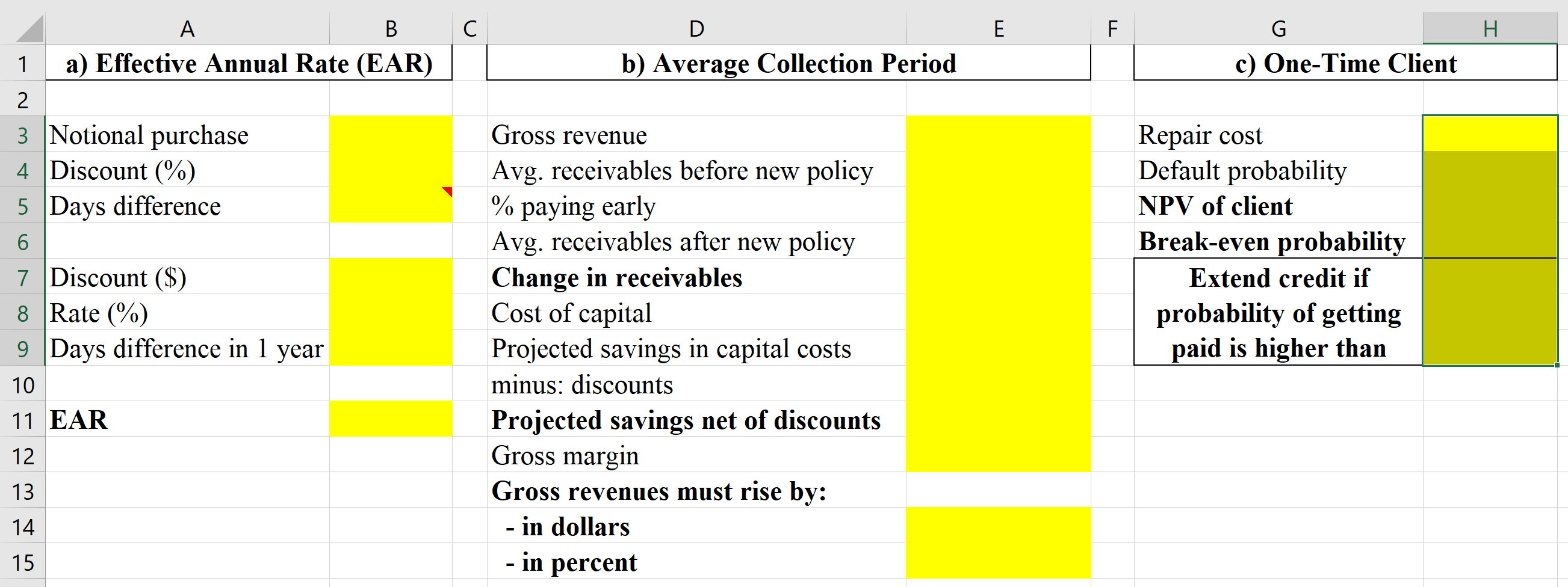Question
a. Argo sells maintenance services to various private jet operators. For these, it demands payment within 15 days. Argo is considering changing this policy to
a. Argo sells maintenance services to various private jet operators. For these, it demands payment within 15 days. Argo is considering changing this policy to 1.1%/5, net 15. What is the implicit effective annual rate in this payment policy?
b. Argo's maintenance service business grosses some $33M per year before discounts and its average days receivable is 20 (unlike the overall business where this number is ~15). If 20% of Argo's clients opt to pay earlier and get the 1.1% discount, what will be the change in the service business's receivables? If Argo's cost of capital is 6%, what are the projected savings of this change in policy? If Argo's gross margin is 33%, by how much will gross dollar revenues have to rise to offset the loss from discounts? In percent?
c. A new client from out of town is quoted $5,500 for a repair. The service people ask you to approve this. You do a quick check on the client and assess a 10% default risk. What is the NPV of the client? What is the break-even probability? What is the minimum probability of collecting for you to approve the service?
IMPORTANT: PLEASE SHOW FORMULAS USED TO CALCULATE

Step by Step Solution
There are 3 Steps involved in it
Step: 1

Get Instant Access to Expert-Tailored Solutions
See step-by-step solutions with expert insights and AI powered tools for academic success
Step: 2

Step: 3

Ace Your Homework with AI
Get the answers you need in no time with our AI-driven, step-by-step assistance
Get Started


